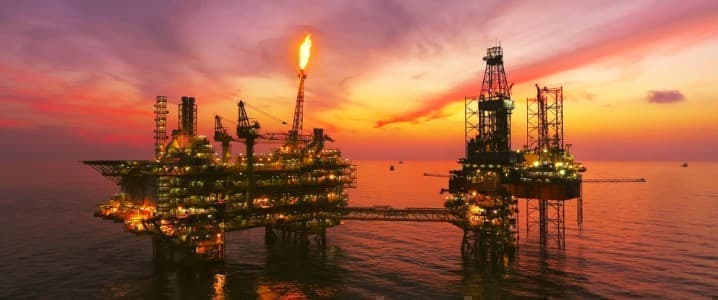Iran is taking its oil future into its own hands, despite ongoing sanctions from the U.S. With higher oil sales and revenues in 2021, Iran is planning to invest in its oil industry by opening a new refinery, constructing a new pipeline, and fostering international relationships to enhance its export opportunities. While U.S. sanctions continue to restrict Iran’s oil exports, this is not stopping the country from continuing trade where possible and preparing for life after sanctions.
This month, the Head of National Iranian Oil Company (NIOC) Mohsen Khojasteh-Mehr stated that oil revenues climbed significantly in 2021. This has been supported by both public and private sector investments in the country’s oil industry. Iran has seen an increase in its sales of crude oil as well as gas condensates and petrochemical products in recent months.
Oil Minister, Javad Owji, reported last week that Iran’s budget for the year, commencing in March, has factored in oil sales of 1.2 million bpd. This is a substantial aim seeing as China is Iran’s only officially known oil importer. It is clear that Iran has been exporting oil at an increasing rate in recent years, however, due to ongoing U.S. sanctions, no other countries have admitted to importing Iranian oil.
Iran is nonetheless investing in its oil industry by opening a super heavy oil refinery on the southern island of Qeshm. President Ebrahim Raisi opened the first phase of the $220 million Qeshm refinery last week. The new plant offers Iran a significant opportunity to boost its petrochemical output, with crude arriving at the refinery from the Soroush and Nowruz oilfields. It has the potential to turn 35,000 bpd of super-heavy crude oil into a variety of products, including bitumen, naphtha, diesel, and light oil. And this figure is expected to rise to around 100,000 bpd within the next three years.
Elsewhere, the government is making plans for a new pipeline project. This month, Iran’s National Iranian Oil Refining and Distribution Company (NIORDC) signed a memorandum of understanding with Bank Mellat for the financing of the construction of a strategic oil pipeline over a four-year period. The Tabesh pipeline, which will be built to connect the Kerman and Razavi Khorasan Provinces, is expected to measure 948 km at a cost of $425.1m. Included in this price are three terminals and two pump stations. NIORDC is aiming for a total transportation capacity of 150,000 bpd of petrol products, ensuring greater fuel security in the east and northeast of Iran.
Iranian Oil Minister Javad Owji stated, "If this pipeline is not there, about 800 to 1000 tankers would be needed to carry this product daily." In addition, "The project is important for fuelling power plants and industries [in this region], but also for exporting to neighbouring countries, including Afghanistan and Pakistan."
Yet, Iran still remains firmly under U.S. sanctions, limiting the oil-rich country’s potential for growth. Iran and the United States continue their stand-off over the revival of the 2015 nuclear deal but, despite stubbornness from both sites, Iran and the U.S. both stand to benefit from the signing of an agreement. For Biden, it would mean advances in U.S. foreign policy, following a messy exit from Afghanistan. For Iran, it would mean the alleviating of conflict, as well as the potential to revive its economy through greater oil revenues and increased trade in general.
Recently, Iran has garnered greater support from major world powers China and Russia in its battle against the U.S., following years of almost total opposition. In a meeting between Foreign Minister Wang Yi and Iranian Foreign Minister Hossein Amirabdollahian a 25-year cooperation agreement was announced between the two states. Wang stated in the meeting that the U.S. bore the primary responsibility for the continuing difficulties with Iran, due to its unilateral withdrawal from the 2015 nuclear deal – the Joint Comprehensive Plan of Action (JCPOA). He also said that China opposes illegal unilateral sanctions against Iran.
Similarly, in a meeting this week between President Vladimir V. Putin and President Ebrahim Raisi, the Russian leader said his country had been “resisting America for 40 years.” He suggested that the two states, along with China, should put on a united front against the U.S. Despite significant differences between the two states, Putin said “On the international arena, we are cooperating very closely.”
While U.S. sanctions on Iran continue, and tensions mount over ongoing negotiations, Iran seems set on developing its oil industry. With plans for increased oil sales over the next year, greater oil security through the construction of a new pipeline, and the increase of petroproduct output thanks to its new super-heavy crude refinery, Iran is clearly setting itself up to take center stage in regional oil production. And with support from major players like China and Russia, it is only a matter of time until Iran achieves this goal.
ADVERTISEMENT
By Felicity Bradstock for Oilprice.com
More Top Reads From Oilprice.com:
- Permian Oil Output Hits Record
- Drone Attacks And Invasion Fears Send Oil Prices Soaring
- Tight Physical Crude Market Points To Higher Oil Prices



















Iran isn’t interested in a new nuclear deal unless it is on its own terms meaning that it wants the United States to lift the sanctions against it first and that it will never accept any limitations on its nuclear and missile development programmes, something the US will never accept.
Moreover, Iran is winning the geopolitical war with the United States and it is very probable that within 1-2 years it would probably accumulate enough highly enriched uranium to assemble
1-2 nuclear bombs once the political decision has been taken.
Dr Mamdouh G Salameh
International Oil Economist
Visiting Professor of Energy Economics at ESCP Europe Business School, London